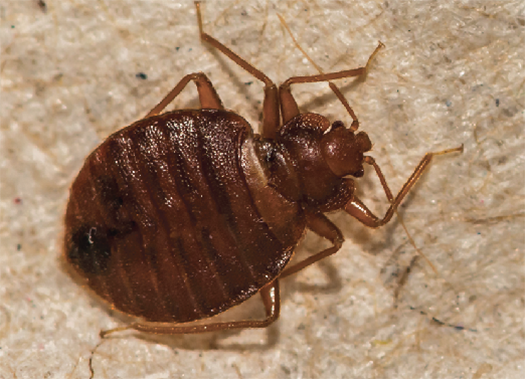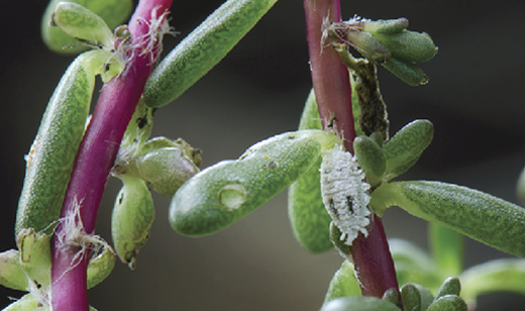Pest Identification Services
Overview
The Entomologist serves Fresno County in three ways: aids in the safe import/export of local agriculture; protects our county agriculture from invasive pests; and identifies and collects data on insects and information for the community.
Industry
Invasive species are a priority for our department with the twin goals of:
- Stopping invasive pests from establishing when new species are accidentally brought in (see Pest Detection section), and
- Ensuring our exported agricultural products are free from pests of concern to the destination country (see the Phytosanitary Certification and Export Program section of the Crop Production page)
Identification
Proper insect identification is essential in the effort to safeguard our local agriculture and natural resources. There is an incredible insect and arthropod diversity. Some of our native species look very similar to the invasive species we want to detect. And there are many harmless species or even beneficial species that might be confused with your pest problem just because they are found in the vicinity of your problem.
This is why familiarity with the local insect and arthropod diversity combined with proper identification is a vital first step in determining whether an insect might be a potential problem species or not. The majority of species we find fall into the category of non-problematic insects, while others fall into the problematic “pest” category because they cause economic damage or health problems.
Entomologist
 The Entomologist corresponds, confers, and is a liaison with personnel of other governmental agencies, the University of California, California State Universities, colleges, the agricultural industry, and community members of Fresno County. The County Entomologist is the local resource for aid and identification.
The Entomologist corresponds, confers, and is a liaison with personnel of other governmental agencies, the University of California, California State Universities, colleges, the agricultural industry, and community members of Fresno County. The County Entomologist is the local resource for aid and identification.
Do you have a specimen you would like the Entomologist to identify?
To have an insect or spider identified, call the main office (559-600-7510) and ask to speak to the Entomologist or leave a message. The Entomologist will call you back. Since photos are usually needed, the Entomologist will give you a few options for sending the photos.
Important: Please review the Instructions for Sample Identification section below so you will know what information is needed.
Instructions for Sample Identification
 We provide free insect and non-insect arthropod identification for the public and commercial industries of Fresno County and surrounding counties.
We provide free insect and non-insect arthropod identification for the public and commercial industries of Fresno County and surrounding counties.
What do you want to know? Here are some frequently asked questions:
- Is this a bug or a spider?
- How can I take care of this problem?
- Is this a bed bug, termite, murder hornet, a brown recluse spider or is it a ________?
- I have pets or children. Is this bug dangerous?
Information to Include with Sample
In what environment was the insect found?
Examples could include the garden, kitchen, closet, outside on a geranium, etc.
What was the host plant?
If it was on a plant and you know what kind, please tell us. Many insects will be specific to a type of plant because they feed on it, so knowing the type of plant will be very helpful.
Where was the insect found?
If a bug problem starts in one area, many people will also start calling in with the same problem. It helps if we know where the problem pest was found. Please provide nearby cross-streets if you don’t want to give an address.
When was the insect found?
Knowing when helps us track seasonal pests by their annual patterns. Please provide the date insect was found.
Please note that during this time due to COVID-19, many of our services may be affected.
Samples can normally be dropped off without an appointment, but we request that you first try to get your answer by submitting questions or photos of your sample. If this procedure is unsuccessful, samples can be dropped off at the office, but the turn-around time is longer.
The time it takes to respond to an identification request may vary from two days to two weeks. If we are unsure of the identification or we need to see the samples, we will contact you. If for any reason you have not heard a response in over two weeks, please contact us again, as there may have been a technical problem or other delay.
How to Submit a Sample
- Close-up photos can be helpful, but only if they are in focus.
- If you have captured the insect, put the insect in the freezer. You will then be able to take a top down (dorsal) and side (lateral) photo. If the insect caused plant or property damage, include a photo of the damage too.
- If the insect or mite is tiny, you can try taking a photo through a magnifying glass (or loupe) if you have one.
- Sometimes it can be helpful to include a coin or common object for size reference.
If mailing in a sample:
- Freeze insects first so that they die. Please do not mail live insects (pests).
- Insects can be submitted in small pill containers, taped to business cards or notecards, or placed in a small plastic vial with 70% rubbing alcohol.
- Don’t forget to include your contact info and information requested above.
If dropping off a sample at the office:
- Freezing the specimens so that they are dead is preferable. Please do not drop off live insects. Only put one insect per container. If there is more than one, they might eat each other.
- Don’t forget to include your contact info and information requested above.
Mailing address (or drop off address)
Department of Agriculture, c/o Entomologist
1730 S. Maple Ave
Fresno CA, 93702